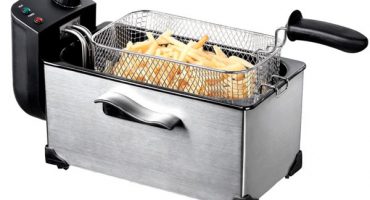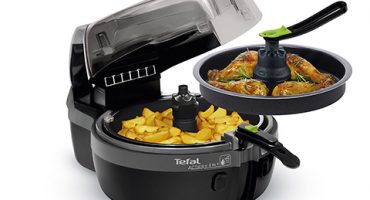Deep-fried dishes are very popular not only with children, but also with adults. In a cafe, the same french fries are often served as a side dish, but it is relatively expensive. To save money, you can make your own deep fat fryer, but before frying, you should find out which oil is best and how often it is changed.
What is a deep fat fryer?
Before cooking in oil, you should find out what deep-frying is: deep-frying is called the method of heat treatment.
The following ratio of product to fat is required: from 1: 4 to 1:20.
The oil temperature reaches 200 degrees, but should not exceed this limit. When improperly fried, substances oxidize and form carcinogens. It is possible to spoil a dish if:
- Use dishes made of metal that catalyzes the decomposition of fat;
- Fry in oil unsaturated with fatty acids;
- Constantly change the temperature.
In simple terms, homemade deep-frying should not be made from materials such as cast iron, copper and iron, and it is also not recommended to use cheap low-quality fat.
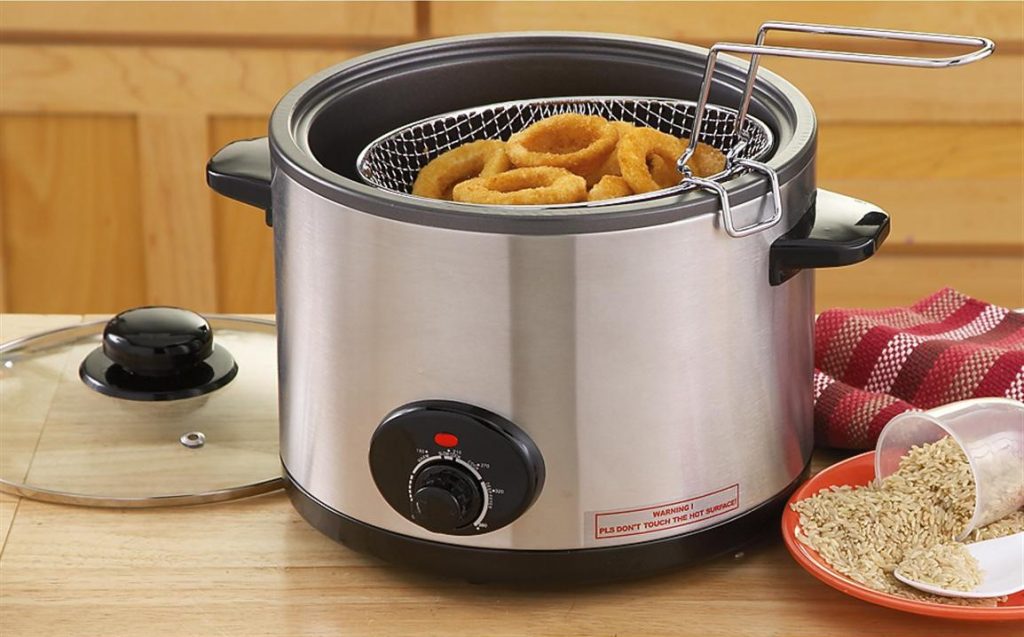
There are compact home deep fryers in the small appliance market
What oil to choose for frying?
The main qualities are simple:
- Refined (purified from impurities);
- Vegetable;
- Without smell.
Palm, peanut, sunflower and olive oils are best. The latter is considered the most successful option, but also one of the most expensive. If you still take fat of animal origin - it can be lard, as well as layers of lamb and pork fat (only melted!).
Important! Butter is not suitable for frying in the same way as margarine.
Features of Vegetable Oil
A vegetable product is easier to use for deep fat, but it is important to consider the nuances of cooking.
Unrefined product is not suitable for deep-frying for the following reasons:
- Impurities in fat are burned and converted into dangerous carcinogens;
- The deep-fat is fouled faster than usual;
- The taste and smell of the finished product changes for the worse;
- The quality of food is getting worse.
In public catering, palm oil is most often used. This product wins the price and the ability to make the dish crispy and soft at the same time, which is important in bakery products. Useful qualities from a palm product should not be expected.
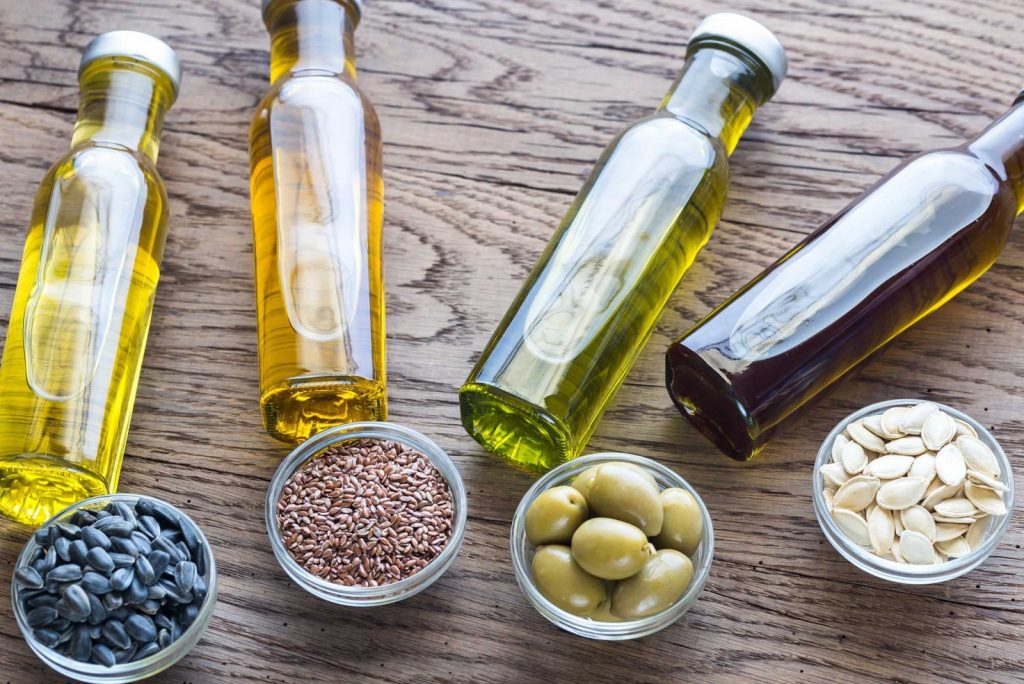
Vegetable fats are extracted from sunflower seeds, flax, olive seeds and other seeds
Animal fats and their use
Fats of animal origin are not suitable for a full-fried deep fat, and you can use them for frying in a large amount of oil (which is the same deep-fat). For cooking, you should take lamb fat, or poultry fat.
To eliminate a specific aroma, you can pour a little vodka into the fat, and to give a more delicate aroma, quince or apple.
Deep-Fried Tips
As for the most common dish - french fries, the specifics of potatoes should be taken into account to make the finished product better and tastier:
- Before frying fresh slices, pour water into a container with the product to wash off the starch, then dry the fries with a towel.This will prevent the potatoes from sticking together in the deep fryer.
When frying, the products should be as dry as possible in order to avoid excessive boiling of the oil and to extend its useful life.
Potato dishes are best cut from varieties of old fruits, as young tubers will be too watery, which contributes to oil spoilage;
- The size of the lobes and layers of nightshade should be the same, so that during cooking each element is fried evenly.

Pleasant amber color indicates high-quality frying
As for the other dishes, you must remember the following:
- Frozen foods are fried portionwise so that their volume occupies no more than ¾ of the deep fat. Cold food cools the butter;
- With frost, you need to shake off the crystals of ice moisture before deep-fried cooking, so that the hot oil cannot burn with water splashes.
- Breading products contaminate the fat container quite quickly. In order to avoid a large number of burnt particles, a paper filter is placed on the bottom of a home-made deep fat fryer, which will attract a breading.
How often to change the oil in deep fat?
An unambiguous usage number cannot be said. According to the average indicators of high-quality oil and timely deep-fat cleaning, the product is replaced after every seven uses. In fact, the change of fats occurs if “liquid gold” acquires the following visual and taste qualities:
- Dishes are bitter after frying;
- The color becomes dark;
- Consistency is converted to a more viscous;
- It smells like cooked food;
- When heated, the fat boils.
Cafes and restaurants often use high-quality oils and professional equipment, where there is a special fat purifier. Cooks are also required to keep journals with oil change records.
On average, fat is changed every three days, but in a closed container, the product can be stored longer.
You will have to dispose of the deep fat immediately with excessive heating of the oil, if the product foams and smokes.

There are professional temperature and substance quality meters.
What causes oil overheating?
The temperature on the stove should not change. The best heating range is from 170 to 190 degrees. High-quality expensive fat for professional deep fryers allows heating up to 220 degrees.
If the oil begins to boil, its use is prohibited, since the substance acrolein is formed in it, which literally translates as “hot oil”. Unsaturated aldehyde will lead to irritation of the biliary tract, followed by heartburn, belching and bloating.
How to clean deep fat
At home, it is recommended to change the oil after each cooking, but with proper use and cleaning of the product, you can cook it two or three more times.
To eliminate food debris, prepare a clean container, as well as a small sieve, gauze folded in several layers, or napkins. The fat is simply filtered through a “filter” and then ready to use again.
To eliminate the obvious smell of cooked food, a piece or two crumbs of white bread, which absorbs unnecessary aroma, is immersed in liquid heated to 160 degrees. It should be removed after 3-5 minutes of frying, when the pieces become rosy.

Elimination of food particles through a special filter
Do not mix old oil with new!
How much can you store deep-fried butter?
Subject to the rules of use, the liquid after preparation can be stored for a long time, from three to six months. Before you remove the product, you should do the following:
- The oil must cool before being removed from the stove. Hot liquid can cause burns and damage to overfill containers. The average cooling time is approximately two hours.
- Fat should be carefully filtered. This can be done both with gauze and strainer, and through coffee filter or several layers of napkins. In the latter case, it is worth considering the possibility of tearing and getting small particles on the dish. For best results, repeat the procedure at least once;
- The storage container should be made of glass, since plastic can release harmful substances into the product.
- Exposure to oxygen, direct sunlight and exposure to high temperatures will damage the substance. It is best to place the bottle in the refrigerator to preserve its qualities.
How to dispose of oil in a deep fat fryer?
Reusable frying oil is no longer suitable for food. In this regard, the question arises: where to put spent fat?
Sewer oil: strict no
Officially, no one forbids pouring used fats into the toilet bowl and sink; this is not prohibited by the law of the Russian Federation. But constant disposal in this way leads to clogging of the sewers themselves: the substance deposited on the walls of the pipes is quite viscous, which leads to thickening of other dirt in greasy places.
The diameter of the pipe is reduced, for this reason, dirty sewage also passes worse. In the best case, the owner of the apartment will face a constant clogging of the local sewage system, and in the worst case, a pipe break and a flood with all sewage.

The consequences of the constant discharge of fat into pipes
Industrial Disposal and Recycling
At the plants, processing is collected in large containers of 40-50 kg of volume, after which they are taken out to special enterprises, where they can do from fat by repeated cleaning and transformation:
- Laundry soap;
- Paint;
- Industrial varnishes;
- Drying oil;
- Biodiesel
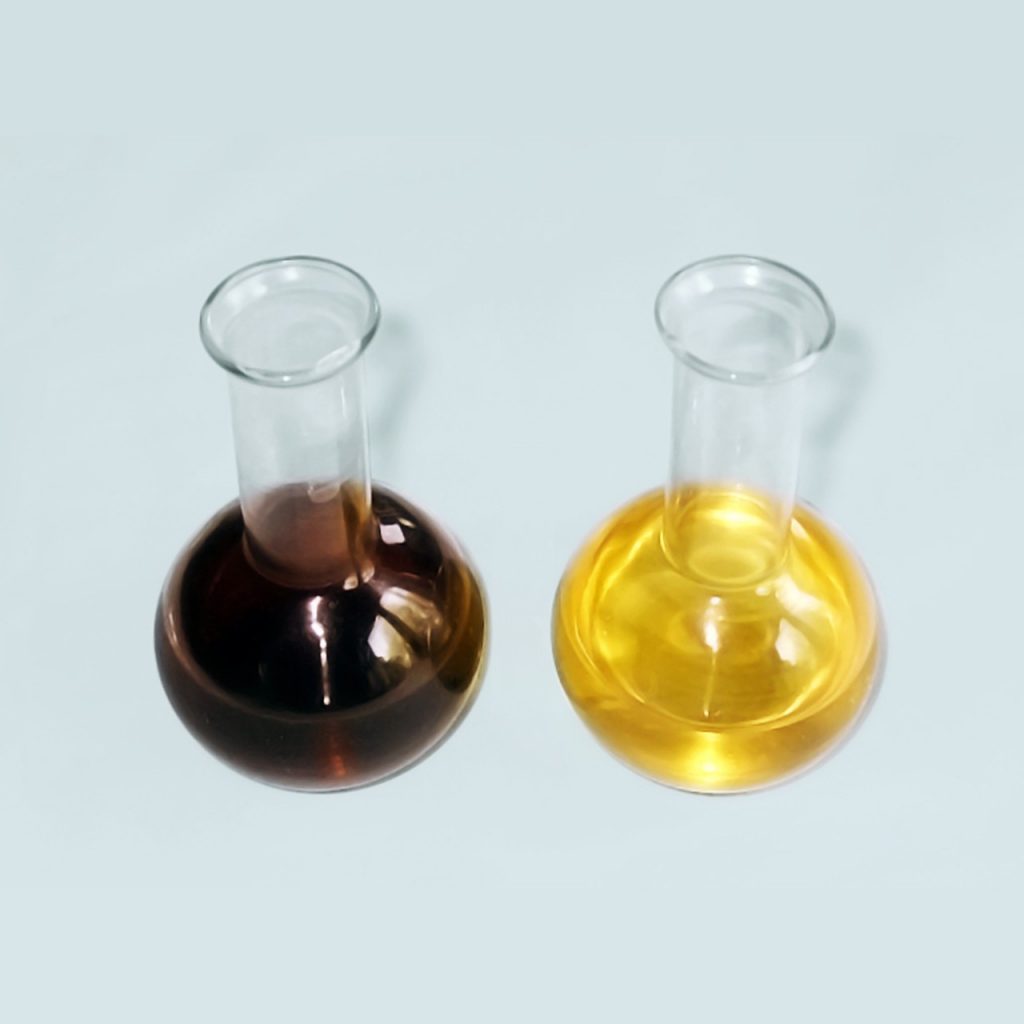
Multi-level cleaning methods give recycled material a new life
Where to throw oil at home?
Collecting the product in containers of tens of liters is impractical. In everyday life, it’s enough not to fill the sewer ways and directly the ground near the house with grease. It is best to pour the liquid into an empty bottle, close it tightly and throw it away with the rest of the garbage.
Remember: deep-fried cooking should harm not only your health, but also the environment as little as possible.

